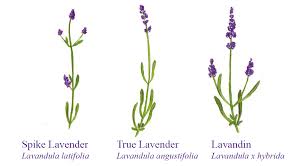There are millions of species of plants living on the planet, with a diversity of characteristics. Fortunately, botanists have completed the difficult task of correctly identifying one plant from another by setting up a system of classification and assigning species according to their common characteristics. These might be similarities in germination, growth, shape or chemistry.
Universal Language
A universal classification system is useful because it avoids the confusion caused by different common names for plants. For example, there are various names for sage - common sage, garden sage and Dalmatian sage - but if an aromatherapist uses its botanical name (in Latin), Salvia officinalis, they can correctly identify the species used for the essential oil to an aromatherapist in any country. By giving every plant a botanical name according to its place in the plant kingdom, misunderstandings such as these can be avoided.
The Hierarchy of Plants
Classification of plants in the plant kingdom follow a set hierarchy like branches on a tree. The kingdom Plantae is the trunk ('plantae' meaning 'plant'), which branches into divisions, which then branch into classes and subclasses, which branch into orders, then families, genera and finally species. Let's take the rose oil produced from damask roses (Rosa damascena) as an example.
- Kingdom: Plantae
- Division: Trachaeophyta
- Class: Angiospermae
- Subclass: Dicotyledonaea
- Order: Rosales
- Family: Rosaceae
- Genus: Rosa
- Species: Rosa damascena
- Common names: Turkish rose, Bulgarian rose and rose otto.

This system has been in use for 250 years, though it's always under review. Aromatherapists should be aware of the need to update their records even though it's rare for a plant to be re-classified.
Knowing your Oils
Aromatherapists use Latin names to avoid confusion between different plant species, common names and variations within the same family.
Unique Oils
Botanists estimate that there are over 1,000,000 species of plants living on the planet; however, the actual number may be far higher. The problem lies where areas of high diversity (rainforests) are being destroyed through technological development. It's not known how many species have not yet been identified or which have been made extinct before classification.
Most of the major plant groups have families with oil-producing species, although the total number of plants known to have essential oils is 3000. This number only accounts for one percent of plants and only 350 of these produce essential oils suitable for commercial extraction.
It's not known why essential oils are such an evolutionary rarity but that they are so uncommon in the plant kingdom only makes them more special and valuable. It may be worth reflecting on this next tine you buy your favourite scent.
By Any Other Name
Why is it important as an aromatherapist to know which species your essential oils come from? Surely lavender, thyme or marjoram, by any other names are just the same? Well, you'll be surprised to learn they are not.

Take two species of lavender: Lavendula augustifolia (true lavender) and Lavendula latifolia (spike lavender). Both have similar properties, but spike lavender has a higher content of camphor, which is considered a neurotoxin.
Spike lavender is also fiercer and not suitable for sensitive skins.
There are many different species of thyme and marjoram and due to carious common names there can be confusion between them. For example, Spanish marjoram is a thyme species growing in Spain, while sweet marjoram is the variety most used in aromatherapy. The Latin names for Spanish marjoram (Thymus mastichina) and sweet marjoram (Origanim majorana) prevents misunderstanding about which plant species has produced the essential oil.
Chemotypes
As well as understanding plant families and species, you should be aware that there are often different chemical types within one plant species. According to which type is used, the essential oils can have varying chemical properties.
A chemotype is a term that describes the predominant chemical component in an essential oil derived from one botanical species. A plant's chemical composition can be altered due to its geographical an environmental conditions.
For example, rosemary (Rosmarinus officinalis) has three chemotypes called Rosmarinus officinalis c.t camphor, Rosmarinus officinalis c.t 1,8 cineole and Rosmarinus officinalis c.t verbenone. (the 'c.t refer to chemotype.) Each chemotype of rosemary has a different predominant chemical, such as camphor, 1,8 cineole or verbenone, and so each one will have a slightly different aroma and the chemical therapeutic properties will vary.